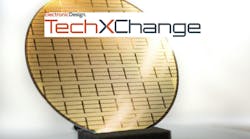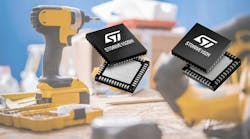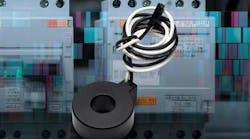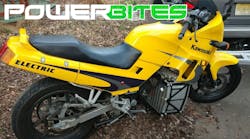GaN Motor-Drive ICs Bring Greater Efficiency to Home Appliances and Industrial Apps
A new family of GaNSense Motor Drive ICs from Navitas Semiconductor delivers high levels of integration, efficiency, and ease of use to home appliances and industrial drives up to 600 W.
Specifically designed for motor-drive applications used in air conditioners, heat pumps, washing machines, dryers, dishwashers, refrigerators, and hair dryers, this fully integrated solution combines two gallium-nitride (GaN) FETs in a half-bridge configuration with drive, control, sensing, and autonomous protection. Compared to legacy silicon IGBT solutions, they offer up to 4% higher efficiency, 40% PCB footprint reduction, and 15% lower system cost.
The driver’s bidirectional, lossless current-sensing circuitry measures both positive and negative currents, eliminating the need for external shunt resistors. Turn-on and turn-off slew rates are fully adjustable, making it possible for designers to optimize EMI, performance, and maximize efficiency.
An autonomous freewheeling function switches on the GaN IC upon detection of reverse current to reduce conduction losses, maximize efficiency, and reduce the size and cost of heatsinks. The GaNSense Motor Drive IC family also includes several safety features, such as high- and low-side short-circuit protection, overtemperature protection (OTP), and 2-kV ESD on all pins.
The 650-V family starts with NV6257 (2 × 170 mΩ, PQFN 6×8), NV6287 (2 × 170 mΩ, PQFN 8×10), and NV6288 (2 × 120 mΩ, PQFN 8×10), supporting drives up to 600 W. Datasheets are available here.
>>Check out this TechXchange for similar articles and videos
Next in This Edition of PowerBites
More PowerBites
About the Author
Lee Goldberg
Contributing Editor
Lee Goldberg is a self-identified “Recovering Engineer,” Maker/Hacker, Green-Tech Maven, Aviator, Gadfly, and Geek Dad. He spent the first 18 years of his career helping design microprocessors, embedded systems, renewable energy applications, and the occasional interplanetary spacecraft. After trading his ‘scope and soldering iron for a keyboard and a second career as a tech journalist, he’s spent the next two decades at several print and online engineering publications.
Lee’s current focus is power electronics, especially the technologies involved with energy efficiency, energy management, and renewable energy. This dovetails with his coverage of sustainable technologies and various environmental and social issues within the engineering community that he began in 1996. Lee also covers 3D printers, open-source hardware, and other Maker/Hacker technologies.
Lee holds a BSEE in Electrical Engineering from Thomas Edison College, and participated in a colloquium on technology, society, and the environment at Goddard College’s Institute for Social Ecology. His book, “Green Electronics/Green Bottom Line - A Commonsense Guide To Environmentally Responsible Engineering and Management,” was published by Newnes Press.
Lee, his wife Catherine, and his daughter Anwyn currently reside in the outskirts of Princeton N.J., where they masquerade as a typical suburban family.
Lee also writes the regular PowerBites series.







